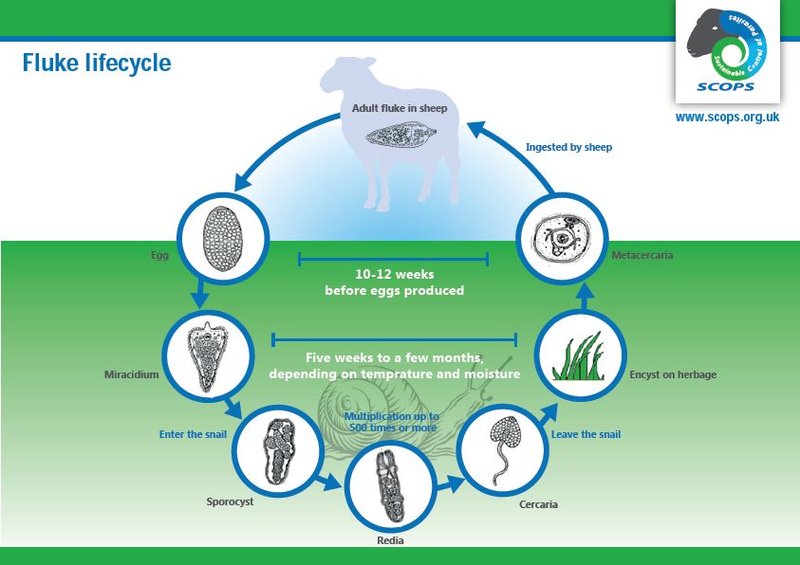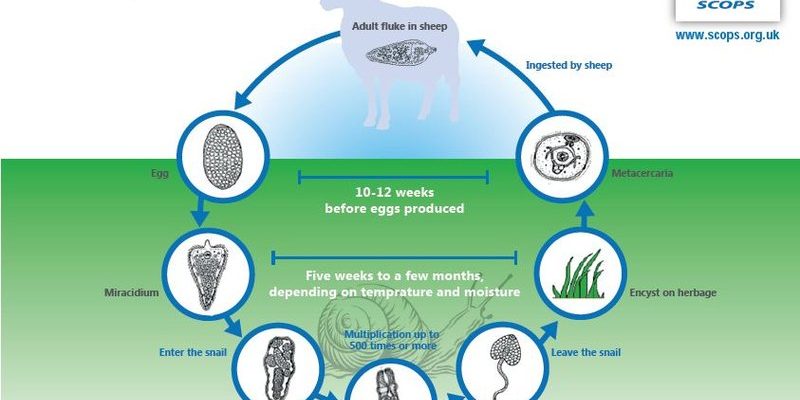
Just like we prepare for seasonal changes, so too do farmers need to pay attention to the cycle of liver fluke activity throughout the year. Using tools like monitoring devices and software can help track these changes. To make this easier, brands have developed remote monitoring systems that sync with these devices, providing real-time insights.
Let’s dive into why monitoring liver fluke activity is essential and how it changes across the seasons.
Understanding Liver Flukes: The Basics
Liver flukes are flatworms that usually infect the livers of various mammals, with livestock being the most affected. These parasites thrive in wet environments, making farms with stagnant water particularly vulnerable. Think of liver flukes like uninvited guests at a party—they sneak in, set up camp, and disrupt the whole atmosphere.
The most common types of liver flukes are Fasciola hepatica and Fascioloides magna. They can cause liver damage, anemia, and other severe health issues in affected animals. Symptoms can be subtle at first, like a mild cough or decreased appetite, but they can escalate quickly. By understanding the life cycle of these flukes, farmers can better anticipate their activity and take preventive measures.
The Seasonal Cycle of Liver Flukes
Liver flukes have a specific seasonal pattern that farmers need to monitor closely. Think of it like watching the weather forecast; knowing what’s coming helps you prepare. The life cycle of a liver fluke starts when eggs are laid in water, where they hatch into larvae. These larvae must find a suitable host, often snails, to continue developing.
In spring, with rising temperatures and increased rainfall, conditions become ripe for liver fluke activity. Eggs can hatch and infest snails, starting the cycle anew. As summer rolls in, these larvae find their way onto grasses, and livestock grazing can become infected. Monitoring during this time is crucial for farmers, as they can implement control measures before the flukes have a chance to spread.
Spring: The Awakening
Spring is when we see a surge in liver fluke activity. As temperatures warm and rainfall increases, the life cycle kicks into high gear. Farmers need to be particularly vigilant during this time. If you imagine spring as the flukes’ awakening from hibernation, it’s crucial to be ready with monitoring tools to catch their activity early.
By checking for signs of fluke infestation, such as poor weight gain and lethargy, farmers can decide when to treat their livestock. Some may choose to use anthelmintics—medications designed to kill parasites. However, timing is key; treating too early or too late can affect effectiveness. Regular monitoring helps in making informed decisions.
Summer: The Grazing Danger
During summer, livestock are often out grazing, which increases their exposure to liver flukes. This is like leaving your front door open; you’re inviting trouble in. When animals eat grass that’s contaminated with fluke larvae, they can easily get infected.
Farmers should focus on monitoring grazing areas closely. Examining pastures for standing water—or areas that stay damp for long periods—can help identify potential hotspots. It’s also a good idea to keep a close watch on animal health during this time. You might notice that some animals are more susceptible than others, which could be due to factors like age or overall health.
Using remote monitoring devices can streamline this process. Syncing these devices with a smartphone or computer allows for real-time updates, making it easier to track animal health across different grazing areas.
Fall: The Consequences of Summer
As summer fades into fall, the effects of liver fluke infections may become more apparent. This is when farmers really need to assess their livestock for signs of distress. If liver flukes have gone untreated, you might see decreased milk production or weight loss in cattle.
Here’s the thing: monitoring isn’t just about catching problems early; it’s also about understanding the consequences of decisions made throughout the year. Farmers should reflect on their treatment methods and consider whether they might need to adjust their strategies moving forward. For example, some may need to switch to a different medication or alter their grazing schedules to reduce exposure.
This season is also a good time to review records of fluke activity from the previous year. Looking back can provide insights into trends and help in planning for the upcoming months.
Winter: Planning and Prevention
Winter is often seen as the quiet season, but it’s the perfect time for farmers to reflect and plan for the next year. Just like you’d prepare your house for winter by checking your heating system, farmers need to check their strategies for managing liver flukes.
This includes evaluating the effectiveness of treatments used during the year and making a plan to improve monitoring systems. It might also be a good time to educate themselves about the latest advancements in remote monitoring technology. There’s always something new to learn, and staying informed can make a big difference in managing livestock health.
Additionally, farmers might want to look into integrating preventative measures, like adjusting their livestock diets or altering their grazing practices based on fluke activity data. Planning ahead can go a long way in reducing future fluke infestations.
Monitoring liver fluke activity across seasons isn’t just a task; it’s an ongoing commitment to the health of livestock. By understanding how these parasites behave throughout the year, farmers can take proactive measures to protect their animals.
Using modern tools for monitoring can help streamline this process, making it easier to identify issues before they escalate. Just like how we adapt our routines based on the seasons, farmers must also adjust their strategies to combat liver flukes effectively. The goal is to keep livestock healthy and thriving, ultimately leading to a successful farming operation. Embracing the challenge of monitoring liver fluke activity is a key step toward sustainable farming.

